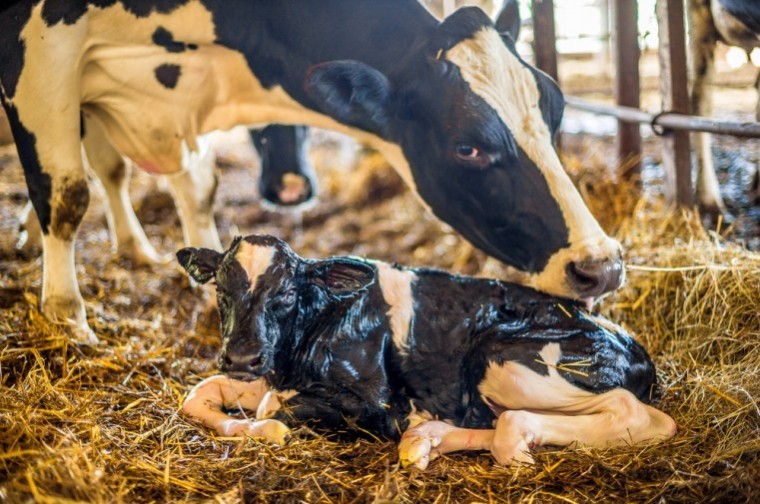90% of pathogens are transmitted to calves in the first hours of life and dairy farmers are being advised to take precautionary steps in hygiene practices that will reduce the risk of costly infections and safeguard the next generation.
Commenting on the risk, Rob Kelly, regional sales director Diversey, the manufacturers of the Deosan range of hygiene products said: “Particularly, with consideration of the current economic conditions and upcoming winter challenges, a focus should be made on preventing the spread of bacteria, which leads to disease and unnecessary costs. Calves have no immunity at birth and so their resistance to disease is low. By failing to reduce the challenge of neonatal disease, farmers are at risk of increased vet and medicine costs, increased labour costs, reduced animal performance and increased mortality. Prevention is much cheaper and time effective than cure.
Some simple steps can be adopted to reduce the risk of infection having a significant impact on your business performance.
“Consider the calving pen and the area the calf is housed in, particularly within the first 24 hours of life. Many farmers disinfect to remove the risk of cocci and cryptosporida, however this can be a false policy without an effective cleaning regime undertaken first. A caustic foam or gel product is very effective as reducing the micro-organism challenge and is highly recommended.
“Farmers also need to look at teat hygiene, especially pre-sucking or pre-milking, and pathogens are removed before the calf ingests them. By effectively disinfecting, the risk from the teat and the milk drawn from the teat is reduced. Be mindful that teats can be highly sensitive on a freshly calved cow and specific products should be considered for maximum comfort and care.
“This leads us onto the equipment, and the importance of hygiene. Failing to clean and disinfect equipment that is used to deliver milk, feed or water will encourage the proliferation of microorganisms that can be readily ingested. Regardless of the system used, correct protocols need to be adopted to ensure a high standard of hygiene.”
Rob also reminds dairy farmers and their staff to not be complacent with personal hygiene, “Coaxing calves to suckle the cow or to the bucket is common practice yet how many people wash hands before this exercise or between calves? And yet you could responsible for passing harmful microorganisms to calves. A few seconds of effort to disinfect hands, could save hours of care for a sick calf, so invest time to prevent infection.
“Biosecurity needs to be taken seriously. Disinfect boots, and clothing if necessary, especially when entering the neonatal calf area, hutch or calving pen, with a DEFRA approved disinfectant. This is good practice and should be implemented as part of the farms calf health policy.
“In addition to improved calf health, there are many benefits to good hygiene,” adds Rob, “From a more desirable working environment to reducing mastitis so I encourage farmers to focus on selecting the most effective products for their farming system which will see an improvement in farm business performance.




